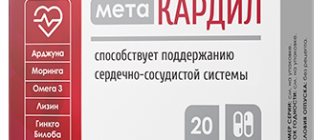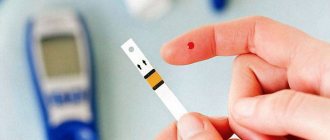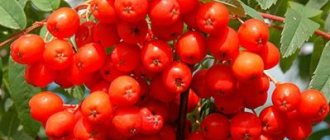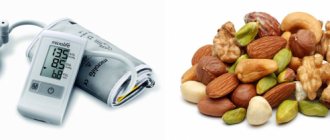Benefits of Chamomile Tea
Chamomile appeared in healers’ medicine cabinets quite a long time ago, which is why it is called nothing less than pharmaceutical. It includes:
- Apigenin. A substance that can suppress allergies, inflammation of various natures, fight free radicals, and inhibit some types of cancer cells. Of all the herbs used to make teas, chamomile contains the highest amount of apigenin.
- Chrysin, which has strong sedative properties. This substance can reduce anxiety, causeless fear, unconditional panic attacks, hysterical state, and relieve nightmares.
- Coumarin. The substance that gives chamomile its characteristic aroma. Known as an antiallergic agent that relieves swelling, especially associated with impaired lymph circulation, postoperative.
- Ascorbic acid. The most important substance for the normal functioning of connective and bone tissues. Promotes the conversion of cholesterol into bile acids, which stimulates digestion and prevents the formation of gallstones. Is a powerful antioxidant.
- Tannins, which give the plant a bitter taste, help improve the functioning of the gastrointestinal tract, normalize the microflora in the intestines, and get rid of microbes and rotting products. Effective for preventing deposits of heavy metal salts, which cause significant harm to the entire body.
- Pectin. Doctors call it the “orderly worker” of the human body due to its ability to cleanse it of harmful substances without disturbing the natural microflora. Removes radioactive elements, toxic substances and pesticides from the body.
- Carotene. Actively participates in metabolic processes, is important for the formation of bones, nails, teeth, fat deposits, stimulates the growth of new cells, slows down aging, fights viruses and bacteria.
- Essential oils with antimicrobial, antispasmodic and regenerating properties. Vitamins, macro- and microelements: potassium, calcium, zinc, copper, iron, magnesium, manganese.
Unlike black and green tea, chamomile tea does not contain caffeine at all.
Monks from Tibet appreciated all the benefits and harms of chamomile tea, its ability to restore cells and stimulate their regeneration. Therefore, this plant is an essential ingredient in the famous Tibetan elixir of youth.
The use of chamomile for hypertension
In the treatment of hypertension, chamomile is used in the form of decoctions, tinctures and teas. But regardless of how the plant acts - it lowers or increases blood pressure, it should be used as an adjuvant. Considering the danger of hypertension and the complications it can lead to without proper and timely treatment, there is no need to place all your hopes only on traditional medicine.
Regular use of chamomile as maintenance therapy for hypertension gives positive results in the early stages of the pathological process. The development of hypertension is indicated by clinical manifestations such as frequent headaches, pressure surges, weakness, dizziness and tinnitus.
Reducing blood pressure with the help of chamomile is ensured due to its pronounced diuretic effect. In order not to put excessive stress on the kidneys, not to provoke dehydration and other complications, you should not combine the use of the plant with diuretic agents.
Using various recipes for preparing chamomile in order to normalize blood pressure, you must follow a number of rules and recommendations:
- Chamomile is an adjuvant used in complex drug therapy.
- The plant decoction should not be too strong, so the specified dosages of ingredients should not be exceeded when preparing it. A drink that is too strong can lead to an overdose.
- Tea from the inflorescences should be drunk as soon as it is infused. From prolonged infusion of the product, the plant weakens and loses its beneficial properties.
- To make the drink sweeter, it is better to add not sugar, but fresh, liquid honey; it will enhance the beneficial effects of the plant on the body.
- If you need to quickly reduce blood pressure, an alcohol tincture will help.
We recommend that you familiarize yourself with St. John's wort, a helper for depression
To prepare a healing drink, you need to choose high-quality raw materials. Chamomile purchased at a pharmacy is better suited for preparing decoctions, teas and tinctures.
Chamomile tea for blood pressure
If you have high blood pressure, it is recommended to drink chamomile tea every day. Classic recipe: stir 1 tsp in 1 cup of boiling water. crushed inflorescences. Infuse the drink for 10 minutes, then strain. Single dosage - 1 glass. Take up to 3 times a day without reference to meals.
The pressure-lowering properties of the plant will be fully revealed if you combine it with other herbs and natural products:
- Mix in equal parts (1 tsp each) chamomile inflorescences and St. John's wort. Pour the herbal mixture with 1 glass of hot water. Leave the product to infuse for 4 hours. Drink 1 glass of the prepared drink at night before bed. To improve the taste and saturate with useful substances, add 1 tsp to the liquid before use. liquid, fresh honey.
- In equal quantities (1 tsp each) combine chamomile, dried and crushed mint leaves and valerian. Brew the collection with 250 ml of hot water, but not boiling water. Infuse the drink for 15 minutes, strain. Dosage - 1 glass per day.
- Mix 30 g of hawthorn and the same amount of chamomile, brew in 1 liter of water at +90°C. Infuse tea for 30 minutes, filter. Single dosage: 200 ml, take up to 3 times a day, half an hour before meals.
For low blood pressure, it is recommended to prepare tea from a complex herbal collection. All ingredients are taken in equal quantities - 1 tsp each:
- hawthorn fruits;
- chamomile flowers;
- Chinese lemongrass fruits;
- knotweed.
To prepare tea, take 1 tbsp. l. herbal mixture, pour a glass of boiling water, leave covered for 20 minutes. Strain before use. Dosage - 1/3 glass before breakfast and lunch.
Teas to lower blood pressure are taken for up to 2 months. If it is necessary to repeat the treatment, you need to take a break for at least 1 month.
Infusions and tinctures
Chamomile infusions have proven themselves to be effective in normalizing blood pressure. To enhance the therapeutic effect of the drink, they are prepared with the addition of other ingredients.
For hypertensive patients, it is recommended to use a recipe with the following components:
- chamomile;
- red rowan;
- hawthorn (fruit);
- calendula inflorescences;
- oregano;
- sagebrush;
- motherwort;
- sweet clover;
- walnuts (partitions).
We recommend that you read: Turmeric Drinks
You should take 1 tsp. each ingredient. Pre-dry and grind the components. To prepare the decoction you will need 1 cup of the collection. It needs to be mixed in 500 ml of high-quality Cahors. Leave for 14 days. Use the product 1 tsp. 1 time per day on an empty stomach.
Chamomile tincture with alcohol:
- Pour 50 g of dried and crushed inflorescences into 200 ml of high-quality vodka or medical alcohol diluted with water;
- Close the container with the tincture tightly with a lid;
- leave for 10 days in a place where there is no access to direct sunlight;
- The container with the infusion must be shaken several times a day;
- After cooking, strain.
This remedy can only be used as prescribed by the attending physician, since individual selection of dosage and duration of the therapeutic course is required.
Tincture of mint and chamomile: take the ingredients in equal proportions - 2 tbsp. l. Brew 200 ml of boiling water, add chopped valerian root (5 g). Infuse the product for 2 hours, then add cinnamon and ground ginger root to taste. Take 5 ml up to 3 times a day before meals.
To normalize blood pressure, the following infusion is used:
- chamomile - 1 tbsp. l.;
- hawthorn - 1 tsp;
- motherwort - 1 tbsp. l.;
- valerian - 1 tsp;
- rowan - 1 tbsp. l.
The ingredients are mixed and crushed. The resulting healing composition is poured into 300 ml of boiled water. The liquid is infused for 10 hours. Strained. Dosage - 100 ml 3 times a day before meals.
Decoctions
Chamomile decoctions can both lower and increase blood pressure, depending on the ingredients chosen. The simplest decoction for normalizing blood pressure is prepared using one pharmaceutical chamomile: 1 tbsp. l. pour 200 ml of boiling water over the inflorescences and place the container on the fire. Bring to a boil and remove from heat. The decoction is prepared only in an enamel container. You should not let the liquid boil, otherwise chamomile will lose most of its beneficial properties. Take ½ glass 2 times a day before meals. You can add mint, St. John's wort, lemon balm or linden in equal quantities to the decoction.
To normalize the general condition of hypertension and blood pressure indicators, prepare a decoction of the following ingredients:
- chamomile;
- Schisandra chinensis;
- hawthorn (berries);
- maral root;
- knotweed
The ingredients are mixed in equal parts. For preparation, take 1 tsp. prepared mixture, which is poured with a glass of boiling water. The product is infused for 20 minutes, filtered. Dosage - ½ glass 2 times a day.
What diseases is chamomile tea good for?
For frequent colds, chamomile tea should be taken not only as a means of accelerating recovery due to its vitamin C content, but also for preventive purposes in order to avoid colds and other diseases. Tea has diaphoretic, antipyretic properties, soothes sore throats, and helps remove phlegm.
During the period of autumn-winter depression, 4-5 mugs of aromatic tea per week will significantly improve your mood and performance, and relieve depression. To improve the effect, you can add a teaspoon of honey or a couple of lemon slices to the drink.
The antispasmodic effects of apigenin will help relieve pain and colic in the intestines and get rid of flatulence. Chamomile tea is useful for gastritis, enterocolitis, peptic ulcers, it will help normalize and restore stool, improve appetite and digestion.
Chamomile tea is irreplaceable after heavy feasts and long holidays, accompanied by overeating, excessively fatty foods, and alcohol. For headaches caused by sudden changes in weather or changes in blood pressure, a glass of chamomile tea will quickly relieve muscle spasms, which will alleviate the condition.
Thanks to the vitamin PP contained in the herb, chamomile tea is also beneficial for people suffering from vascular spasms, rapid leg fatigue, and a tendency to varicose veins. Tea will help with muscle spasms caused by stomach pain or during menstrual periods. For heavy and very painful menstruation, it is recommended to take tea daily a few days before it starts.
As a sedative, chamomile tea should be taken 2-3 cups per day. It helps you relax, fall asleep faster, relieves depression, and speeds up adaptation after stress.
For diabetes mellitus, regular consumption of chamomile drink significantly reduces blood sugar levels, keeps it in one position, which improves the patient’s condition.
Daily consumption of chamomile tea also affects your appearance. The skin becomes healthier, acne and purulent formations disappear. Later and in smaller quantities, age-related pigmentation appears on it. To improve your appearance, just drink a glass of warm tea in the morning on an empty stomach and wash your face with it.
To strengthen the immune system after a long illness or during a seasonal exacerbation of colds, a cup of tea a day for two weeks is enough. The plant phenols contained in chamomile will make the body resistant to any virus and bacteria of any nature.
Contraindications and overdose
Chamomile has therapeutic effects, but if you exceed the dose, it can cause serious damage to your health.
Contraindications include:
- low blood clotting;
- personal intolerance to the drug;
- allergic reactions;
- gastrointestinal problems;
- heart diseases;
- mental disorders;
- bleeding disorders;
- Liver disease;
- pregnancy.
The following side effects may occur if the dose is incorrect or taken for a long time:
- Nausea with periods of vomiting;
- Headache;
- dizziness;
- diarrhea;
- weakness and drowsiness;
- bleeding.
How to brew chamomile tea
Pour a teaspoon of chamomile or a bag of herbs into a glass of hot water, but not boiling water. After boiling, the water should stand for 10 minutes to cool to 90-95 degrees, most suitable for brewing any tea. Infuse under the lid, like regular tea, for 5-10 minutes. Strain thoroughly through a strainer or gauze folded in several layers. Take warm, adding a teaspoon of honey or sugar to taste.
The specific taste of chamomile can be varied with a couple of mint leaves, grated with the zest of 1/4 lemon. Adding any component according to your desire and taste will not affect the medicinal properties of the herb in any way.
Preparing chamomile tea is so simple and does not require much time that it is better to avoid brewing it for future use. After standing for a while, the drink becomes richer and more bitter. This option is only suitable for external use of the herb.
It is better to take the drink after a meal, but not earlier than an hour later. At this time, it normalizes the digestion process and prevents gas formation in the intestines.
conclusions
The use of natural herbal remedies in the treatment of arterial hypertension is a safe, although not fully effective, treatment method. Ordinary chamomile has a rather weak effect on blood pressure, and therefore is used only in the early stages of the disease, and its benefits will be noticeable only with long-term and systematic use. However, its combination with other herbal remedies makes it possible to achieve a more significant and lasting decrease in high blood pressure.
It should be noted that herbal remedies are not able to stop exacerbations of the pathology - hypertensive crises. Only potent synthetic medications can cope with them.
How to use chamomile tea leaves
Chamomile brewed in tea still contains a large amount of beneficial substances. It can be used for lotions and compresses, or simply chewed. In the form of a compress, the herb will relieve fatigue, gray skin, swelling and black circles under the eyes, skin inflammation, and accelerate the healing of wounds and abrasions.
While chewing, it perfectly disinfects the oral cavity, freshens breath, and soothes pain from inflammation of the lips and mucous membranes. The herb can be brewed a second time to be used for baths, washing, hair washing and douching.
Beneficial properties of chamomile
This plant contains a large number of different substances beneficial to the body.
For treatment, it is better to buy a ready-made extract or collection at the pharmacy. Medicinal herbs undergo radiological control before reaching the shelves of pharmaceutical factories.
For medicinal purposes, chamomile extract, infusion, essential oils and dry collection are used.
Applicable in the following areas:
- Skin lesions of a bacterial or inflammatory nature.
- Disorders and diseases of the biliary system.
- Respiratory diseases accompanied by cough and swelling of the mucous membranes.
- Erosive diseases of the gastrointestinal tract.
- Reducing pain.
- Normalization of sleep.
In the absence of allergic reactions, it can be used for a long period of time.
Contraindications
Chamomile is one of the most universal herbs, the use of which has no side effects and is suitable even for small children. However, it is not for nothing that it is called medicinal. This means that you should treat it accordingly. Otherwise, a harmless glass of herbal drink can harm the body or lead to exacerbation of chronic diseases.
A chamomile drink is not recommended for people with individual intolerance to this herb. An excessive concentration of chamomile in tea will do more harm than good. This drink can cause headaches, low blood pressure, upset stools, and weakened muscle tone. Constantly drinking too strong tea will harm your emotional state, leading to a prolonged depressed or irritable mood, and loss of attention.
It is advisable to avoid chamomile tea when taking medications with a sedative and diuretic effect. Chamomile has similar properties, and such a mixture will cause an overdose with the corresponding consequences.
You should not drink chamomile tea if you have diarrhea. Take it with caution if you have low blood pressure.
Pregnant women should avoid chamomile tea completely or take it in a weaker concentration, no more than one glass per day. The plant stimulates the formation of estrogen, which can cause miscarriage.
How does chamomile affect blood pressure?
Proponents of pharmacotherapy do not consider this plant a remedy. It is not able to quickly lower blood pressure.
This plant contains salicylic acid and vitamin C. These ingredients have a positive effect on the vascular system. Long-term use of chamomile-based medications helps strengthen blood vessels and relieve spastic pain. However, this dose is not enough to lower blood pressure. Therefore, chamomile is not used as an independent remedy.
Nevertheless, hypertensive patients use it in complex therapy. With minor deviations in the indicator, chamomile helps improve the patient's condition. For this reason, it can be used as an ingredient in herbal medicine.
From a medical point of view, it can both lower and increase blood pressure. All because of ingredients that have the opposite effect. Before starting therapy, it is important to determine the cause of the change in pressure.









